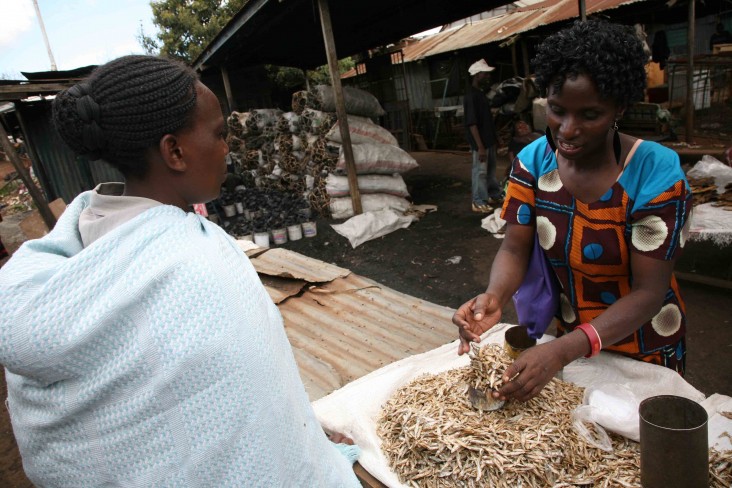
Small businesses in Kenya are challenged by the lack of essential business support services, especially financial services. Two-thirds of Kenyans do not have access to basic financial services such as banking accounts. Due to the prominent role of agriculture in Kenya’s economy, USAID’s activities to strenthen the agricultural sector play an important role in reducing poverty and encouraging broad-based growth. In addition, USAID supports the growth of microenterprises especially in rural and agricultural areas.
Trade
USAID works closely with the Government of Kenya to implement activities that promote increased trade. USAID’s Trade and Investment Hubs are designed to reinforce regional and bilateral efforts to strengthen Africa's economic competitiveness and assist countries to take greater advantage of the trade opportunities provided by the African Growth and Opportunity Act (AGOA) and other global trade initiatives. The Trade and Investment Hub programs include trade capacity building, improvements to the private sector enabling environment, better market access and opportunities, trade facilitation, food security programs, and export promotion support for African products.
Learn more: East Africa Trade and Investment Hub, Exporting Through AGOA: A Kenyan factory expands with AGOA
Development Credit
USAID has encouraged the banking sector to greatly expand services to underserved segments of the population. USAID has developed a practical tool for identifying profitable opportunities within value chains and assisting banks and microfinance institutions to design financial products that address specific needs of agricultural value chain microenterprises. In addition, USAID programs have helped increase access to finance for public utilities, including energy, information and communications technology, water and health.
In 2011, banks partnering with USAID extended nearly $117 million in loans to nearly 58,000 beneficiaries, of which 22,000 were microenterprises.
Energy Development
One of the most critical constraints to economic growth is access to energy. A majority of Kenyan households and businesses, especially in rural areas, do not have access to energy; access is estimated at 18 percent overall and 5 percent in rural areas.
Power Africa is supporting the Government of Kenya’s vision to increase the supply of and access to reliable, affordable, and sustainable electricity for economic growth. Power Africa uses a transaction-based approach to take promising projects from idea to financial close by serving as a bridge between the Government of Kenya and the private sector.
During 2015 the Power Africa initiative provided transaction advisory services to the 310 megawatt (MW) Lake Turkana Wind Project, which began construction in FY 2015. It is expected to connect an additional 900,000 households and 130,000 small businesses.
Fact Sheets
Kenya Power Sector Report: Development of Kenya's Power Sector 2015 - 2020








Comment
Make a general inquiry or suggest an improvement.